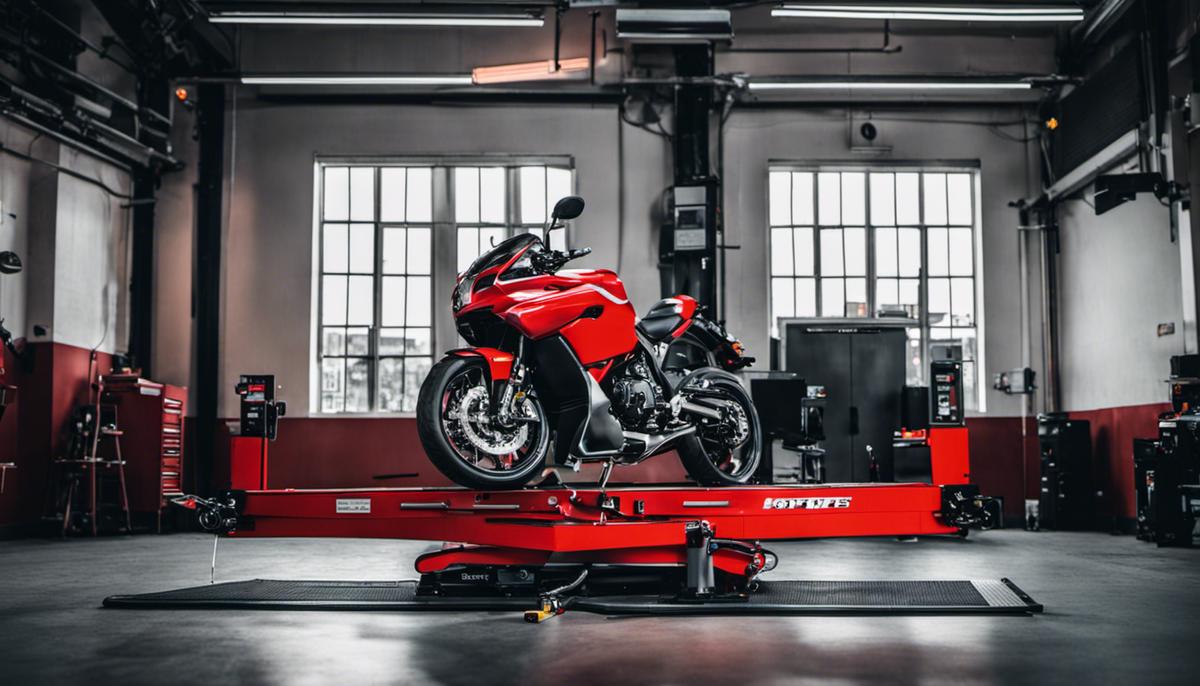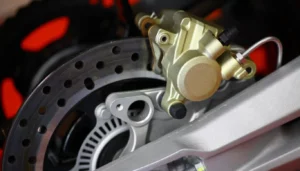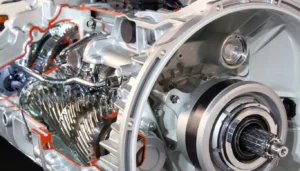Just like your body needs proper alignment to function well, so does your bike. This guide will explain motorcycle wheel alignment and terms like caster, camber, and toe-in/toe-out. It will look for uneven tyre wear or a pulling sensation while riding to identify alignment issues.
With knowledge of string and laser aligners, you can align wheels and maintain bike health. This guide emphasises regular checks to show how rider weight, weight load, and tyre replacement can affect bike alignment.
Understanding Motorcycle Wheel Alignment
Motorcycle wheel alignment involves aligning the front and rear wheels to be parallel and perpendicular to the ground. This alignment affects a motorcycle’s performance, road handling, tyre lifespan, rider comfort, and safety. Wheel misalignment reduces control, tyre wear, and fuel efficiency. Thus, motorcycle wheel alignment is essential.
Significance of Alignment Terms: Caster, Camber and Toe-in / Toe-out
In wheel alignment terms such as caster, camber, and toe-in/toe-out play a significant role in understanding the condition of the set up of your motorcycle.
- Caster: On motorcycles, casting aligns the steering axis with the contact patch of the tire. It measures the angle of the steering pivot relative to a vertical line when viewed from the side of the motorcycle. More positive caster angle gives the steering a better ‘feel,’ and improves stability at high speeds, but it can also make the vehicle more difficult to steer.
- Camber: Camber refers to the angle of the wheels when observed from the front of the bike. If the top of the wheel leans farther inwards or outward compared to the bottom, it is considered to have negative or positive camber, respectively. Misaligned camber can cause poor handling and uneven tyre wear.
- Toe-in / Toe-out: Toe refers to the position of the tyres relative to the centerline of the bicycle. Tires that point inward are called “toe-in.” Tires that point outward are called “toe-out.” Incorrect toe on motorcycles can affect steering and tyre wear.
How Wheel Misalignment Impacts Motorcycle Performance
Misalignment has many negative effects. These include lower gas mileage, handling, tyre vibrations, and premature wear. Unaligned tyres can cause your motorcycle to drift, requiring constant steering corrections. A misaligned wheel can make the bike react poorly to road hazards and make turns and corners harder.
Thus, proper wheel alignment is essential for riding safety and performance. Once you understand these terms and how wheel alignment affects your motorcycle, you can diagnose and fix any alignment issues.
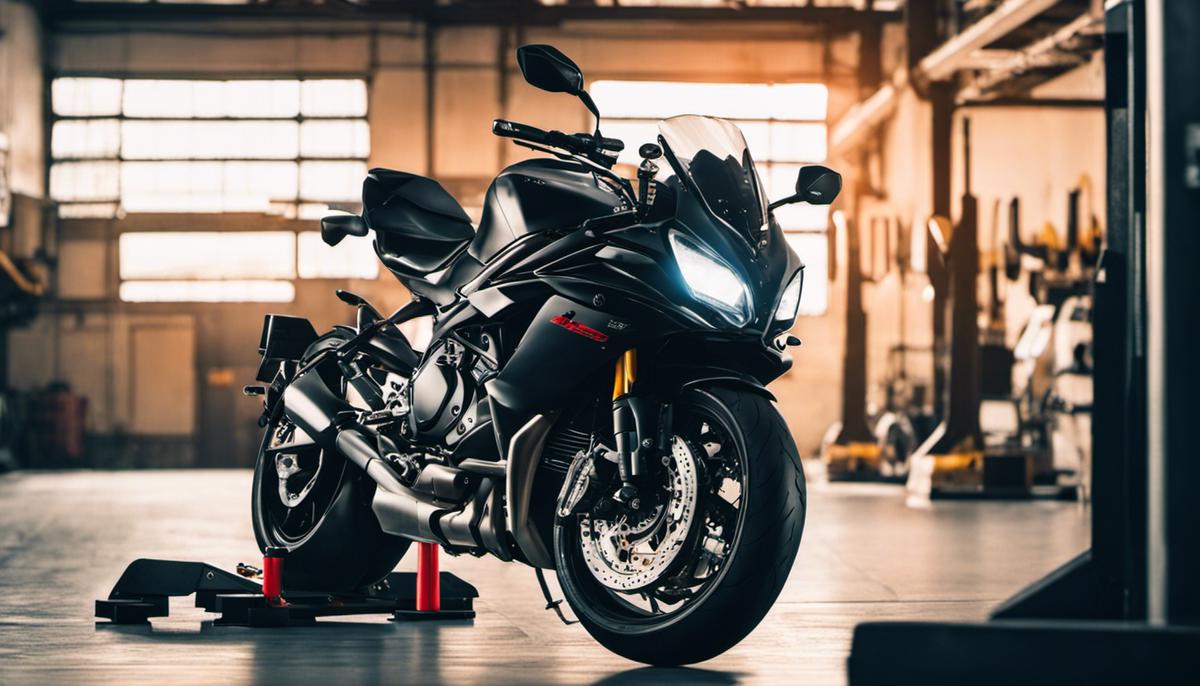
Finding Alignment Issues
Identifying Motorcycle Wheel Alignment Issues
Motorcycle wheel alignment can substantially impact the safety and efficiency of your ride. Identifying alignment issues begins with a keen observation of your motorcycle’s performance. Notably, one of the most apparent signs of wheel misalignment is uneven tire wear. The tires may wear more on one side than the other, or you might notice irregular wear patterns.
Another strong indication of alignment issues is an unusual pulling sensation while riding. If your motorcycle pulls to the right or left when you’re trying to ride straight, the wheels may not be properly aligned. This can initially be a subtle sensation, but it will persist and possibly get worse over time.
Turning or balancing problems can also indicate wheel misalignment. You may have trouble controlling your motorbike if it seems unsteady or unresponsive.
Tools Used for Accurate Wheel Alignment
Using the right tools can improve motorcycle wheel alignment checks and adjustments. Laser and string aligners are commonly used for this.
String aligners are budget-friendly and work by creating a ‘true line’ for reference. You wrap the string around the front and rear wheels and measure the distance from the string to the wheel on both sides. The measurements should be the same if the wheels are aligned correctly.
Laser aligners, while more expensive, provide a high level of accuracy. They project a laser line onto the targets attached to the wheels. To determine alignment, you compare the position of these lines. If they line up perfectly for both wheels, they are aligned correctly.
Whether you opt for string or laser aligners, ensure you use these tools on a flat, level surface, with the motorcycle’s weight distributed as it would be during a ride. This means checking alignment with the rider’s weight on the bike and with the fuel tank full.
Paying close attention to the signs of misaligned wheels, and using the correct tools, can help you keep your motorcycle wheels properly aligned for a safer and smoother ride.
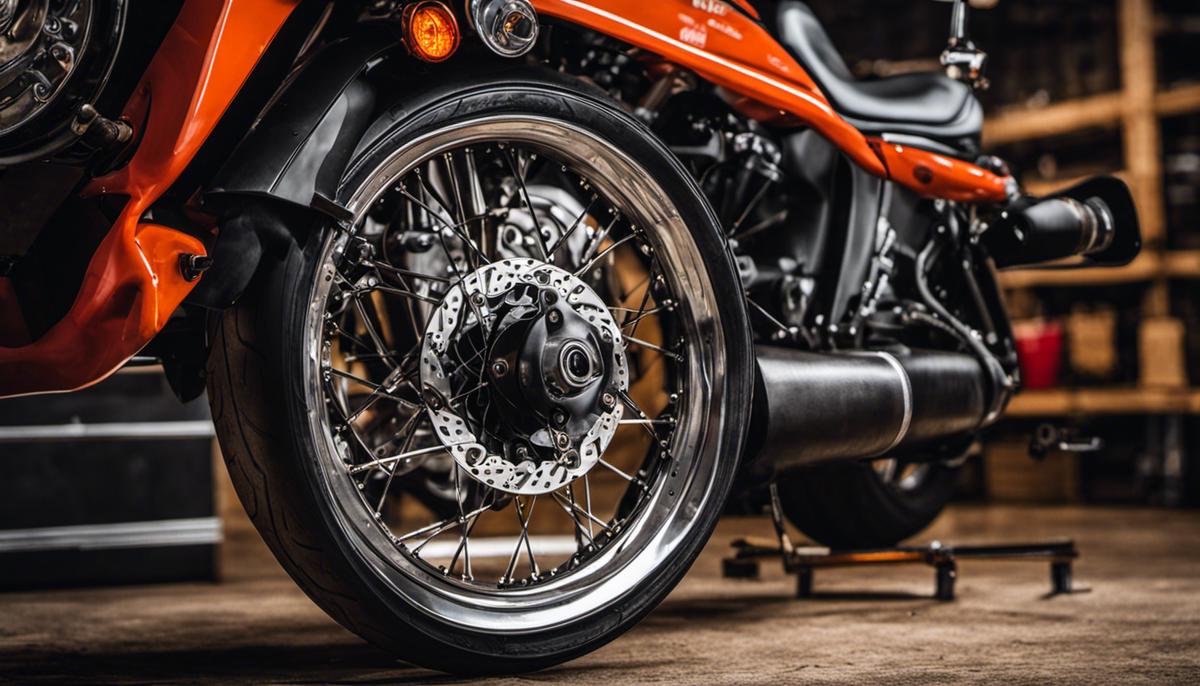
How To Fix Motorcycle Wheel Alignment
Motorcycle wheel alignment affects handling, safety, and tyre life. Aligned wheels help your motorcycle track straight without pulling. Overlooking wheel alignment can reduce fuel economy and increase tyre wear, affecting motorcycle performance.
Step 1: Loosen the Wheel Axle Nut
To begin the wheel adjustment process, put the motorcycle in a vertical position using its center stand or another suitable stand. Make sure the vehicle is steady before starting the work. Start by loosening the axle nut. This nut is typically located in the center of the motorcycle wheel. Use a suitable wrench to slightly loosen it, but do not remove the nut entirely.
Step 2: Adjust the Rear Wheel
In the next step, adjust the rear wheel to align with the front wheel. To do this, locate the adjuster screws on both sides of the rear wheel, typically found at the end of the swingarm. Turning these screws will change the position of the rear wheel. Turning them clockwise will shift the wheel to the rear, while turning anti-clockwise will move the wheel forward. You’ll need to adjust each side evenly to ensure the wheel stays in alignment. It is recommended to make small adjustments, check the alignment, and then make further adjustments as needed.
Step 3: Tighten the Axle Nut
Once you’ve adjusted the rear wheel, it’s time to tighten the axle nut. While maintaining the wheel’s alignment, retighten the axle nut. Make sure this is secure, but do not overtighten as it can result in damaging the wheel or axle.
Step 4: Verify Alignment Using Appropriate tools
It’s important to verify the alignment using the proper tools after adjustment, typically a combination of straight edge and a measure. Place a straight edge on the sides of the tires, and use the measure to compare the distance between the straight edge and each tire at several points. The distance should be consistent; if it varies, you may need to repeat the alignment process.
Step 5: Test Drive
Finally, after verifying the alignment, conduct a test ride. Ride the motorcycle slowly in a straight line and feel if it is pulling to one side or vibrating. If the ride feels smooth and you don’t sense any off-center pulling, you’re good to go. However, if you feel the motorcycle is not tracking straight, you may need to readjust and recheck your wheel alignment.
Remember, a well-aligned motorcycle not only improves its lifespan but also ensures safety on the road, making this often overlooked maintenance task crucial for all motorcyclists.

Photo by thisisengineering on Unsplash
Periodic Checking And Maintenance
Understanding Motorcycle Wheel Alignment
Motorcycle wheel alignment is crucial to its health and performance. Proper wheel alignment can improve ride comfort, tyre life, and fuel efficiency. Wheel alignment should be checked and corrected regularly for optimal performance and safety.
Impacts of Weight and Load on Wheel Alignment
Adjustments to rider weight, weight load, or suspension can affect alignment. The suspension compresses when a motorcycle is loaded with riders or gear. Wheel alignment changes with bike angle. Check the alignment when the load drops or rises significantly.
How Tire Replacement or Repairs Affect Alignment
Tire replacement and repairs also play a significant role in affecting wheel alignment. Each time you replace or repair your tires, they will naturally sit on the rims in a slightly different position, potentially altering the alignment. Motorcycle maintenance should always include an alignment check following tire work to ensure everything remains in the correct place for hassle-free operation.
Periodic Checks: The Key to Optimal Performance
Wheel alignment should be checked regularly for motorcycle maintenance. It’s simple and can give your motorbike the best performance and safety. Regular checks can detect alignment issues before they become major issues, saving you time and money. Even minor misalignments can wear out your tyres and make your motorcycle harder to handle.
Wheel Alignment Maintenance
To check your motorcycle’s wheel alignment, visually inspect the front and rear wheels. Checking and adjusting your swing arm alignment marks usually does this. Always consult a professional if you’re unsure. In addition to improving bike performance and longevity, proper alignment makes riding more comfortable.
Maintaining your motorcycle’s wheel alignment requires regular checks but is essential for safety and performance. Ignoring misalignment could affect ride quality and safety. Every motorcyclist should know how to align wheels.

Honing your skills and knowledge in motorcycle wheel alignment is not merely about ensuring a smooth ride. Protecting your life and others is the main goal. With a thorough understanding of terms like caster, camber, and toe-in / toe-out, coupled with the ability to identify and rectify any alignment issues, you’re investing in the long-term integrity and safety of your bike.
Regular checks and consistent maintenance become less of a chore and more of a perceptive, proactive measure. Let the insights from this article be the compass that guides you towards keeping your motorcycle in optimal condition. The road to safety doesn’t merely rely on carefully executed turns but also on perfectly aligned wheels!
